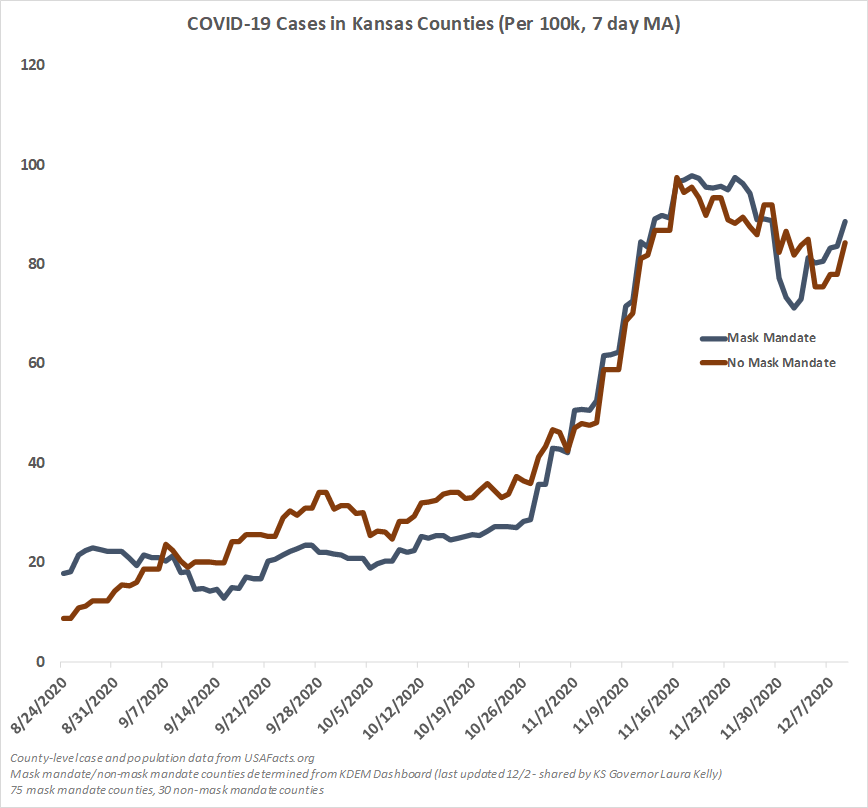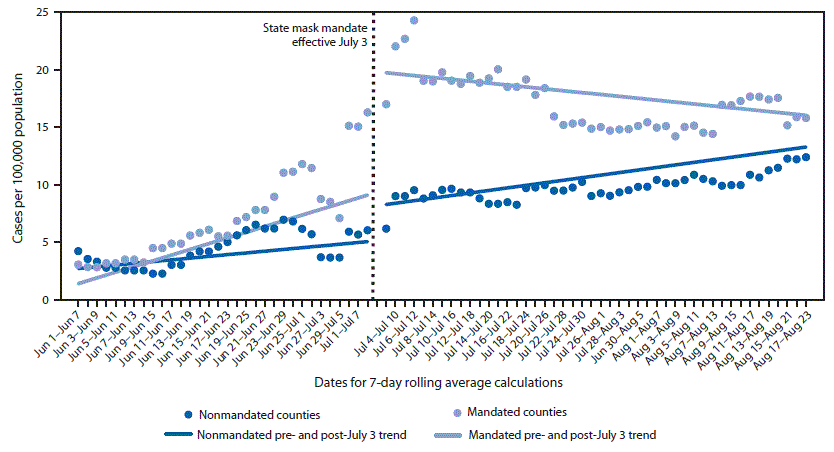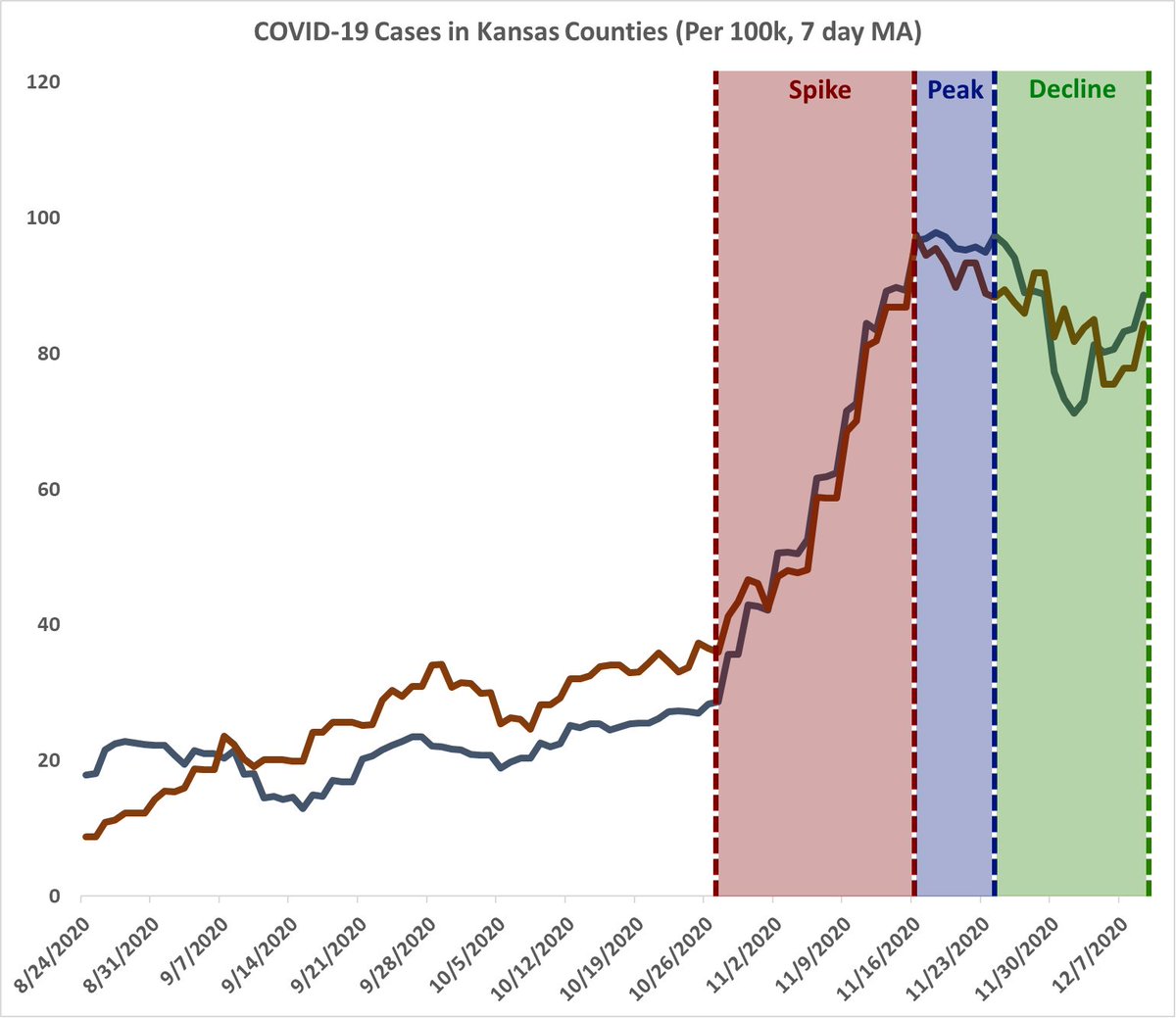
1/ 3 months ago today, Iowa ended all COVID restrictions. As you can see, it turned out to be a complete disaster, as all the replies in the thread below predicted. 
https://twitter.com/BethMalicki/status/1357819382441852930
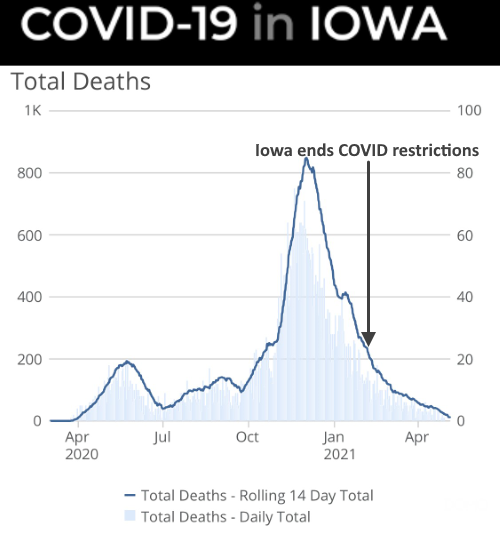
2/ Compared to its neighbors, Iowa's 7 day average of daily cases has actually diverted and become lower than the Midwest average, and was spared a large spring wave seen in stricter states like Michigan. 
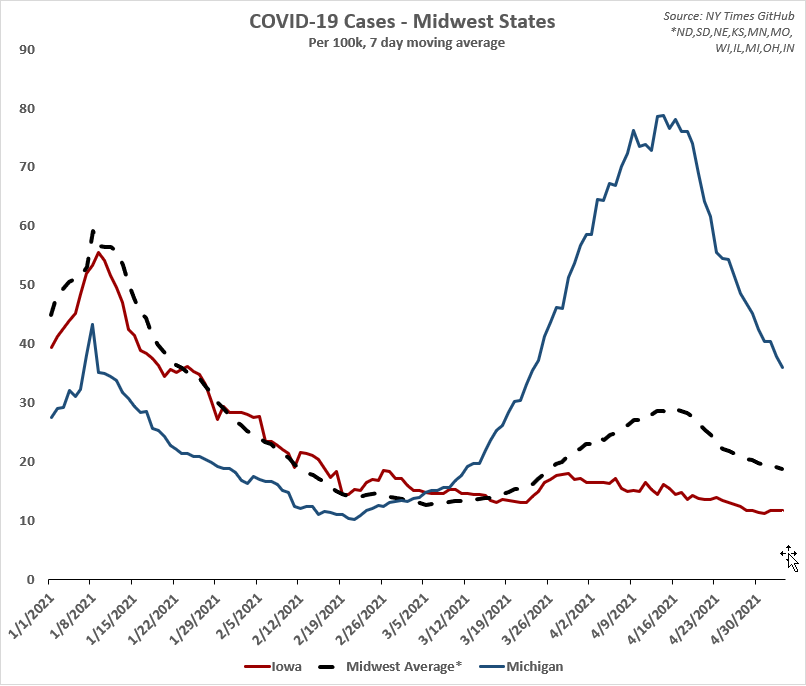
3/ "But what if they're not testing enough?" I'm sure some would say. Seems like the other side of the same coin of the Trump "you don't find cases if you don't test" argument, but here are hospitalizations instead, compared to the midwest and national average. Still better. 
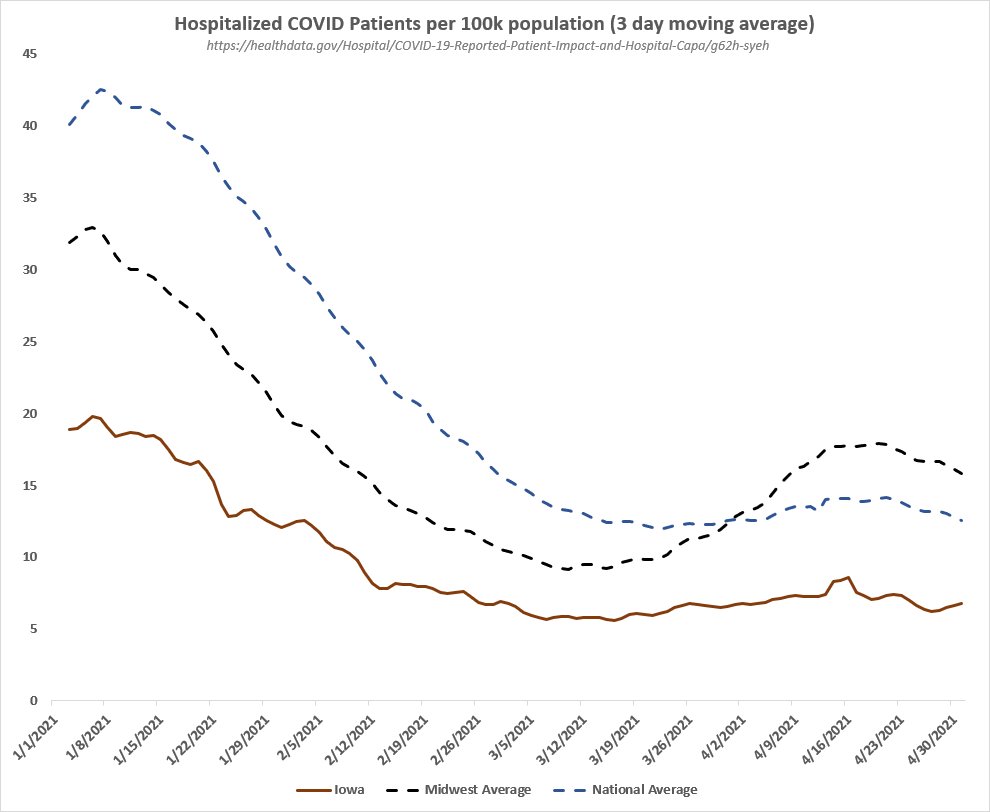
4/ Speaking of hospitalizations, Iowa has the 9th lowest COVID hospitalization rate in the United States, and 3rd lowest hospitalization rate of states its size or larger (only CA and UT are lower). It's also 45% lower than the national average. 

5/ Iowa has vaccinated nearly 80% of seniors in the state, which is 8th highest in the United States, and 3rd highest of states its size or larger. As seen everywhere else, seniors accounted for a vast majority of COVID deaths in Iowa (over 90%). 
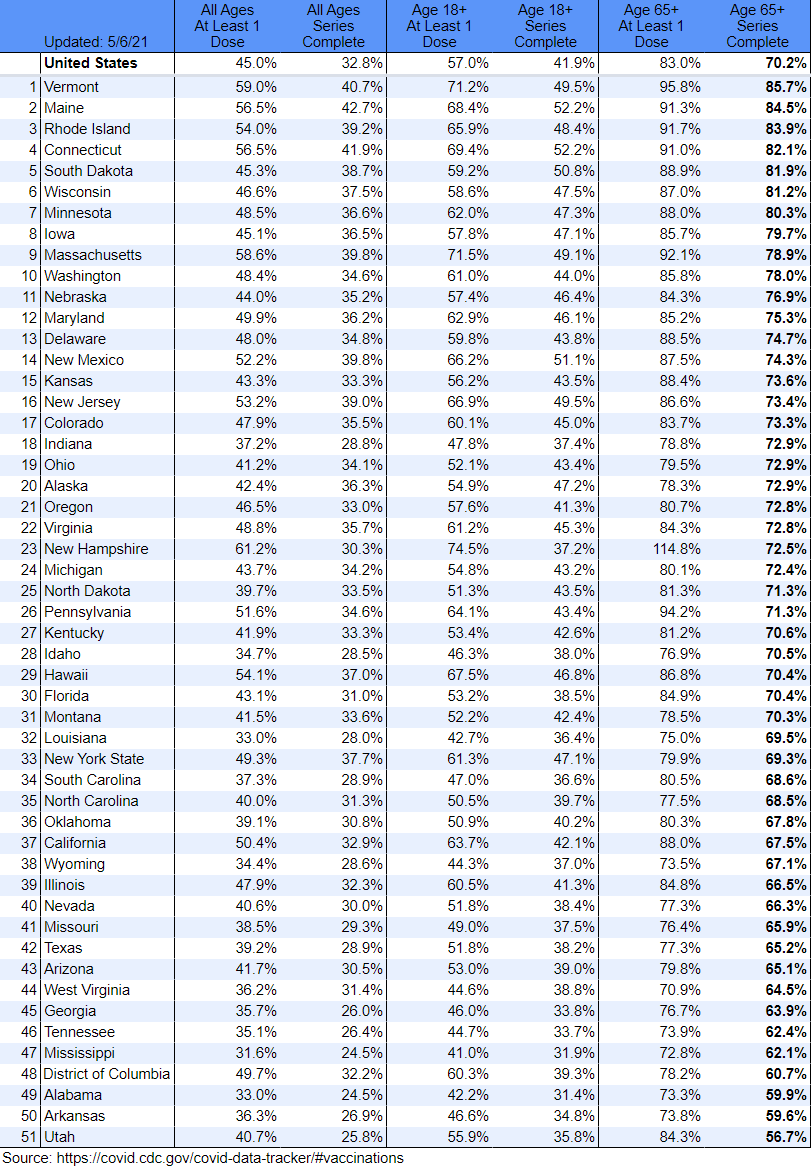
6/ There are states with governors that talk a lot about "equity", then there are states that actually have a pretty equitable pandemic response. People of color in Iowa were not disproportionately affected by COVID, unlike other states like California and New York. 

7/ Some may mention Iowa's COVID death rate being above the national average, but their excess death rate (this includes all deaths, not just COVID) is below the national average. Maybe having a balanced, holistic pandemic response is the right call? 
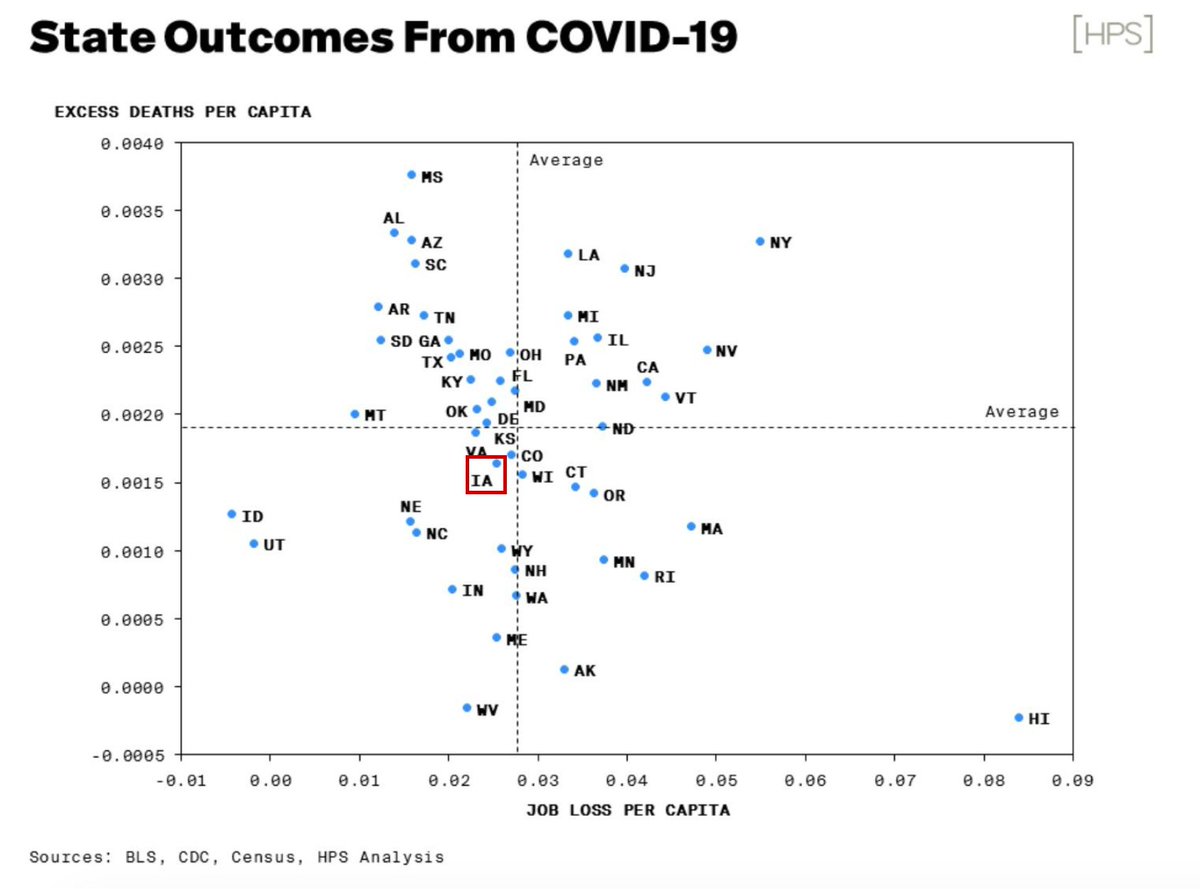
8/ Perhaps most importantly - 100% of schools in Iowa provide full-time in-person instruction and they have since February 15th. Iowa is one of 10 states that provides 100% full-time in-person instruction, and the 3rd largest state to do so behind Florida and South Carolina. 

9/ Iowa is also ranked as the 2nd fastest-recovering state in the country when it comes to COVID health, leisure/travel, and the economy/labor market. They are the #1 state in leisure/travel recovery (restaurants, theaters, shopping centers etc). wallethub.com/edu/states-cov… 
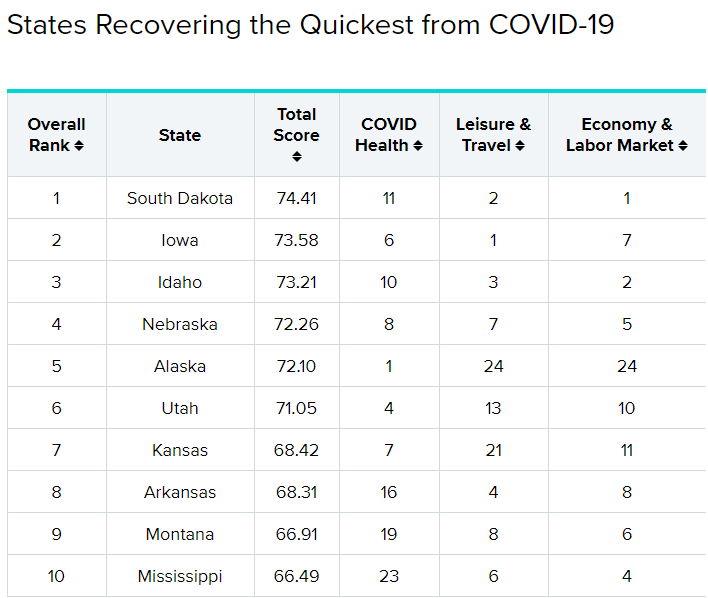
10/ So, by nearly every available metric, Iowa is doing pretty great! How have the media and "experts" covered Iowa, though? Here's an example - this Atlantic piece titled "Iowa is What Happens When Government Does Nothing" published 12/3. Hospitalizations are down 81% since. 
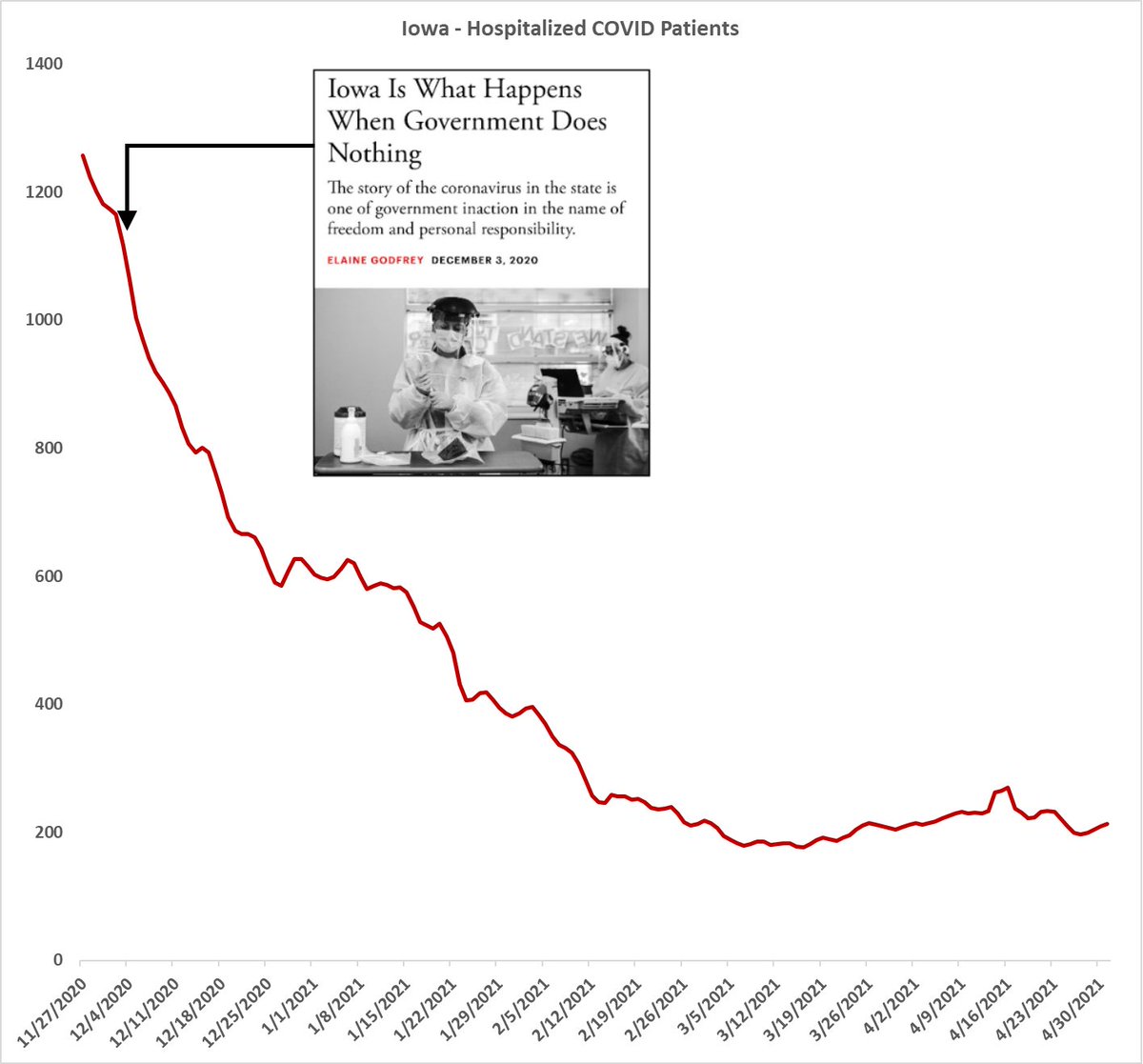
11/ One of the so-called experts extensively quoted in this Atlantic piece is Eli Perencevich, who said Iowa's lax policies would result in a "super peak" over the holidays and thousands of preventable deaths. "The storm's coming". (No storm came). 

12/ Not just a storm - a tsunami, with as many as 80 deaths per day coming a few weeks after the holidays in Iowa, according to Perencevich. The rolling average of deaths in Iowa peaked and started rapidly declining at almost the exact same time that he said this. 
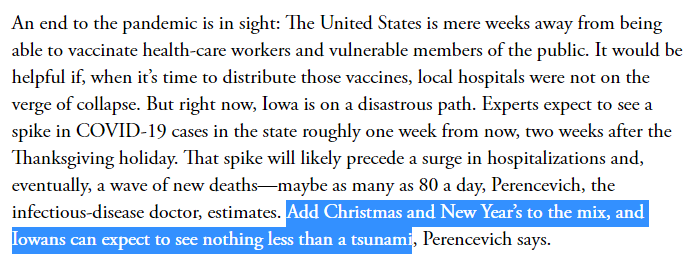
13/ You'd think Eli would check his biases about how much we can control a virus, but he doubled down in January, saying "things will get worse" because God forbid he saw a picture of *squints* kids playing together. (Hospitalizations are down 64% since he tweeted this.) 
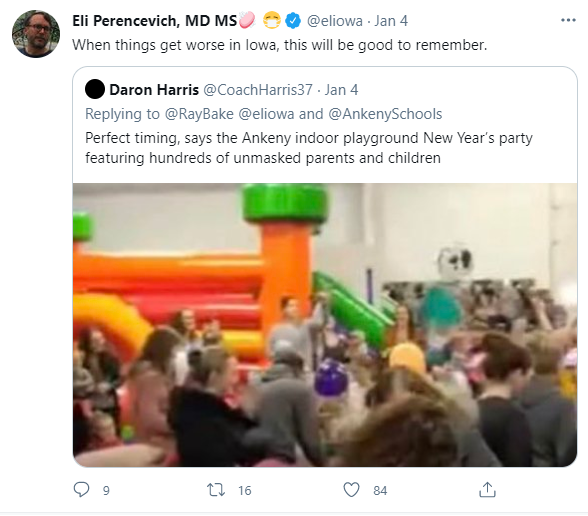
14/ Moving along, once Iowa lifted all COVID restrictions 3 months ago Lyz Lenz wrote this Washington Post piece titled "Welcome to Iowa, a state that doesn't care if you live or die". As you can see, it's aged well. 
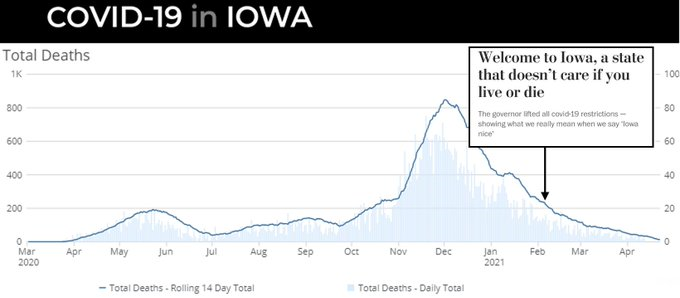
15/ The entire piece is condescending, elitist swill, but the closing of the article is particularly bad. "Iowa Nice" is alive and well. There are just miserable people whose brains have become so badly broken by partisan politics that they no longer see it. 
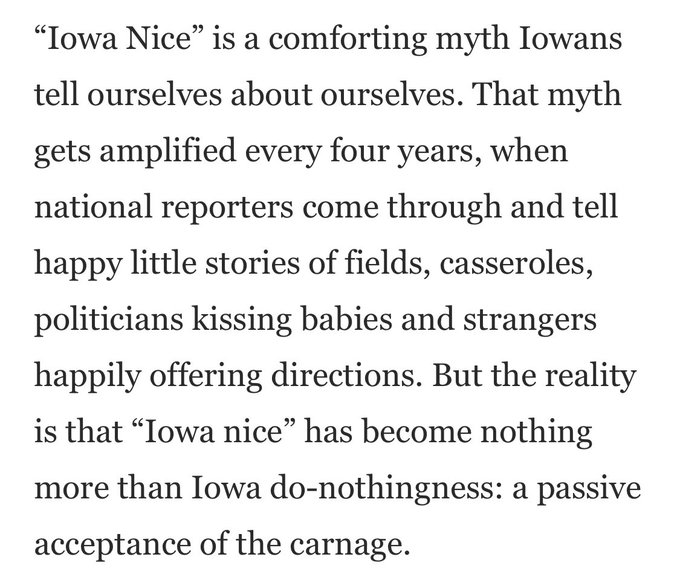
16/ So there you have it. Next time you see panicked headlines promising carnage when a state lifts more COVID19 restrictions, remember Iowa, which alongside Florida, Texas etc. has helped prove seasonal stimuli are much stronger than whatever pandemic theater you put in place. 
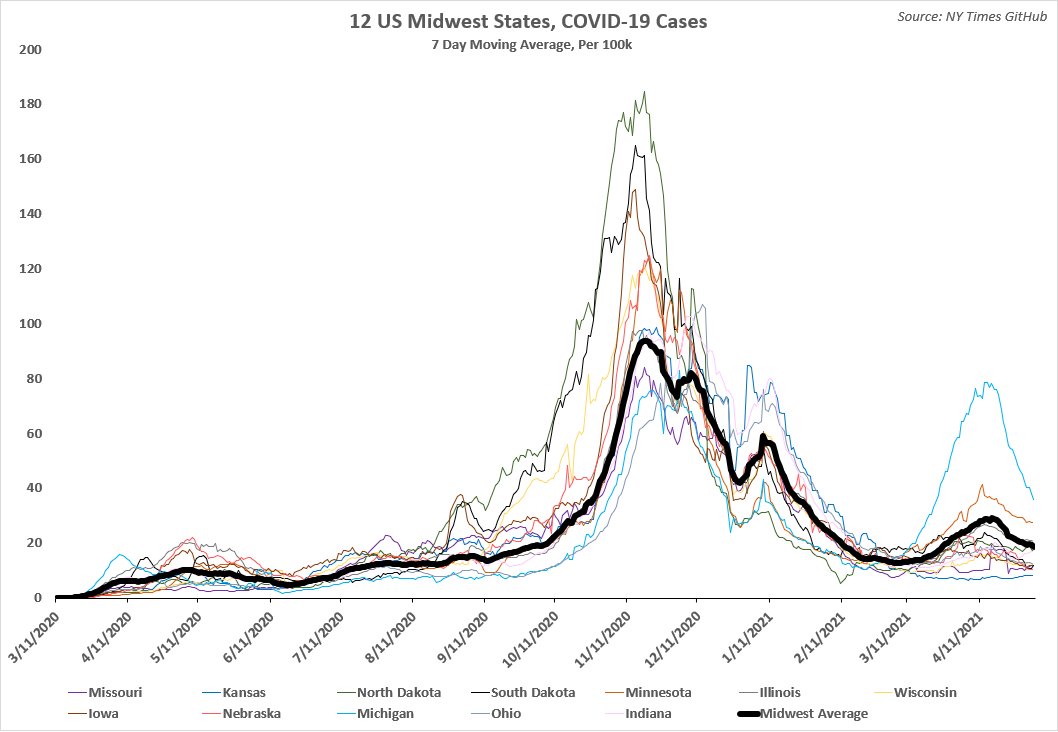
• • •
Missing some Tweet in this thread? You can try to
force a refresh











